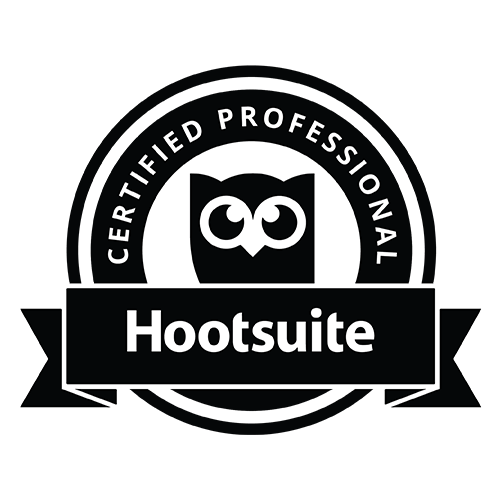Why “Free Plus Shipping” Works
It was just last year that we all saw our Instagram feeds swarming with pictures of the same red swimsuit everyone wanted for free. Sunny Co. started this trend last year, by letting their followers know whoever posted a picture of their red swimsuit and tagged them in it would get a free swimsuit, worth over $60. Instagram users went wild over the opportunity and hundreds of thousands of users posted the picture to their own profiles. Sunny Co. ended up having to cap the amount of users that could receive the free suit, which created a massive outrage across the internet. Sunny Co. had to shut down their account because of the influx of users on to their account.
Ever since that offer came to be, thousands of online businesses are using the “free plus shipping” model to bring in consumers. They up-charge the shipping cost, sometimes to over $10, and do not provide users with shipping or tracking information. Since consumers feel as if they got their item for free, they do not necessarily mind the long shipping times or the high shipping costs. From the business’s perspective, they have an opportunity to bring in thousands of new consumers by providing these limited-time offers on their online platforms. This model also provides the business with the opportunity to create brand evangelists. If consumers are happy with their free suit, they will post it on their social media, and then potentially order another bathing suit for full price on the website. From my own experience, when you order from a website like this, they do a very good job of following up with the consumer for feedback on their service. Yes, the bathing suit took two weeks to get there, but they ask how the fit was, how the service was, and then they give you a coupon code for your next purchase. Since so many businesses are using this model, it is important for them to find a consumer that wants to purchase more from them, not just ones that receive free items.
Brands often use these posts to increase engagement on their social media platforms and website. When brands have a high number of followers, they are perceived as more reputable, which is very helpful to smaller businesses. To do this, brands often only give offers to users that follow their account or like their latest picture. This increases their reach for future posts and increases engagement on their current posts. Businesses often rely on the consumers not unfollowing them directly after they redeem the offer, so it creates a longer-term bond with the consumer. These online businesses do most/all of their marketing through social media, due to the low costs and high reach capabilities, so these promotions are what they rely on to get the word out about what they have to offer to consumers.
Social media is an amazing place for businesses to offer products and services to consumers. For young consumers, free items are a pull to try new things and purchase from businesses that they have never heard of. However, try to do your research before putting your credit card information into any website to make sure that it is reputable. If you get lucky, though, you score a free swimsuit and businesses score your trust.
It was just last year that we all saw our Instagram feeds swarming with pictures of the same red swimsuit everyone wanted for free. Sunny Co. started this trend last year, by letting their followers know whoever posted a picture of their red swimsuit and tagged them in it would get a free swimsuit, worth over $60. Instagram users went wild over the opportunity and hundreds of thousands of users posted the picture to their own profiles. Sunny Co. ended up having to cap the amount of users that could receive the free suit, which created a massive outrage across the internet. Sunny Co. had to shut down their account because of the influx of users on to their account.
Ever since that offer came to be, thousands of online businesses are using the “free plus shipping” model to bring in consumers. They up-charge the shipping cost, sometimes to over $10, and do not provide users with shipping or tracking information. Since consumers feel as if they got their item for free, they do not necessarily mind the long shipping times or the high shipping costs. From the business’s perspective, they have an opportunity to bring in thousands of new consumers by providing these limited-time offers on their online platforms. This model also provides the business with the opportunity to create brand evangelists. If consumers are happy with their free suit, they will post it on their social media, and then potentially order another bathing suit for full price on the website. From my own experience, when you order from a website like this, they do a very good job of following up with the consumer for feedback on their service. Yes, the bathing suit took two weeks to get there, but they ask how the fit was, how the service was, and then they give you a coupon code for your next purchase. Since so many businesses are using this model, it is important for them to find a consumer that wants to purchase more from them, not just ones that receive free items.
Brands often use these posts to increase engagement on their social media platforms and website. When brands have a high number of followers, they are perceived as more reputable, which is very helpful to smaller businesses. To do this, brands often only give offers to users that follow their account or like their latest picture. This increases their reach for future posts and increases engagement on their current posts. Businesses often rely on the consumers not unfollowing them directly after they redeem the offer, so it creates a longer-term bond with the consumer. These online businesses do most/all of their marketing through social media, due to the low costs and high reach capabilities, so these promotions are what they rely on to get the word out about what they have to offer to consumers.
Social media is an amazing place for businesses to offer products and services to consumers. For young consumers, free items are a pull to try new things and purchase from businesses that they have never heard of. However, try to do your research before putting your credit card information into any website to make sure that it is reputable. If you get lucky, though, you score a free swimsuit and businesses score your trust.
Never miss an update from “The Shoppe,” sign up for our email list today!
Subscribe
Sign up with your email address to receive news and updates.
Subscribe
We will get back to you as soon as possible.
Please try again later.
We respect your privacy.


Address
4 Corporate Drive,
Clifton Park, NY 12065
Shopper and Marketing Insights to Your Inbox!
Sign up with your email address to receive updates and insights from the SparkShoppe team!
Newsletter footer
We will get back to you as soon as possible.
Please try again later.
We support your right to privacy and therefore will not disclose your personal data to other organizations, third party vendors, suppliers or marketers.
© 2024 All Rights Reserved | Privacy Policy | Accessibility Statement















